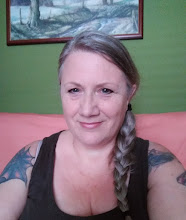Today we really knuckled down and did some work. We said we would have a whole day of science and we did. We are covering Biology at the moment and in particular trees, plants, leaves, grasses and, eventually, plants as food.
We started our day off on a field trip to Capstone Park to look at trees, leaves and grasses. Firstly we had to pick out 4 different trees and measure the circumference of the trunks using string and a tape measure and then record the results. We then picked a leaf from each tree to aid it's identification and took bark rubbings. We also had a look at some cut branches around the park and counted rings to decipher age and discussed why some rings are wider apart than others.
Then we gathered a few more larger leaves that were similar in shape for another experiment which we set up later (more on that in a bit).
We then moved onto a nearby field and, whilst the dog ran around, we looked at one length of the field and it's hedgerow and picked as many different grasses as we could find to identify once home; taking note of how common they were to find.
On the way back to the car we found a largish cut log with very clear rings that Callum counted and then measured the circumference of the log to find a comparison with number of rings in relation to circumference of trunk.
Once home we used the two measurements 62 rings with a 127cm circumference to come up with the calculation 127 / 62 = 2.05 years per cm. Using this we could work out an approximate age of the trees we measured.
We also used various references to identify the trees and created a page for each tree with the leaf, the identification, the measurement and approximate age and bark rubbing.
Callum also did some leaf rubbings to create some artwork.
After dealing with the trees we used the computer and a print off to identify some grasses and made a little booklet with the grass, id and some general information. We also recorded the popularity of the grass within the border that we took them from.
This completed most of the written and research work and it was time to set up a couple of extra experiments which we can monitor.
One was to see how much moisture a leaf will lose over a period of time, using petroleum jelly to mask parts of or all of the leaf. One leaf was left completely uncovered, one had the top side covered, one the underside covered and one completely covered with jelly. They were then hung up by string and will be monitored over the next week or so.
Working from left to right; underside covered, not covered, all covered and topside covered. We'll see what happens.
Then we set up another experiment to see how roots and shoots grow using a piece of sweet potato.
Again, we'll see what happens.
Callum worked really hard today to get everything done and even when he was starting to flag, he suggested a break and then went back to it.
So what has Callum learnt today, in his own words: "we can use other ways of finding out the age of a tree other than counting rings and that the size of the leaf is not compared with the age as our oldest tree did not have the largest leaf." and "there are lots of different types of grass".
Best bit of the day: "The field trip to measure the trees".
Tomorrow will be tying up any lose ends from the week and getting some maths done.
Cya
All experiments come from http://www.amazon.co.uk/dp/1741856140/?tag=hydra0b-21&hvadid=11068759565&ref=asc_df_1741856140










No comments:
Post a Comment